By Allyn Vannoy
Hitler’s Germany was known for its organization and efficiency, as well as its deprivations, terror, and cruelty. This was exemplified in its security forces.
Among the many Third Reich police and security organizations were several military police types, the Feldgendarmerie, Geheime Feldpolizei, Heeresstreifendienst, Marinekusten-Polizei, and numerous police-security regiments and divisions. In addition to the military police there were state security organs such as the SS, SD, and the Gestapo, which were also found to operate in combat zones as well as in Germany and the occupied territories.
The Rise of Nazi Paramilitary Police
The Treaty of Versailles, which ended World War I, imposed limits on the manpower of the German Army, and military police units were disbanded. With the Nazi rise to power and the start of World War II, the floodgates were opened for numerous police organizations to be formed and also the creation of a chaotic hierarchy of security forces.
The seed of the German military police began with state police organizations. The various state police battalions across Germany in the early 1930s were, in effect, paramilitary organizations, which allowed the Nazis to quickly expand both the Army and the military police by converting these units to national service once the party came to power.
In January 1934, the Nazi regime began unifying the various state police forces into the Landespolizei by transferring police powers to the national level. The post of chief of the German police in the Ministry of the Interior was created with Heinrich Himmler appointed to the position, thus blurring the lines between the police and the SS. As a result, the position of SS and police leader was created in 1938. The purpose of the SS and police leader was to be a direct command authority for every SS and police unit in a given geographical region, answering only to Himmler and Adolf Hitler.
The Feldgendarmerie: Equipment and Duties
The Feldgendarmerie was the regular military police arm of the Wehrmacht. Not only was it associated with standard military police duties, but some Feldgendarmerie units were assigned occupation duties in the territories controlled by the Wehrmacht. Their missions ranged from traffic control and civilian policing to suppression and execution of partisans.
Military police schools taught a wide range of subjects including criminal code, general and special police powers, forestry, fishery and waterway codes, traffic codes, industrial codes, passport and identification duties, folk culture, first aid, weapons drill and instruction, shooting, self-defense techniques, and criminal police methodology. There were also lessons in air defense, animal protection, and typing and stenography courses.
After examinations candidates spent time working at a police station. It was no easy feat passing the requirements and becoming a police officer. From one batch of 219 trainees, only 89 made it as far as the final examination. Former civilian policemen drafted into the Feldgendarmerie acquired military ranks in keeping with their former police status.
Within the German Army, the Feldgendarmerie received full infantry training besides having extensive police powers. They were employed with Army divisions and higher formations.
Each field army of the Wehrmacht had under its command a Feldgendarmerie battalion and each division a Feldgendarmerietrupp. A typical Feldgendarmerie battalion included a command group with one officer, one warrant officer, two noncommissioned officers, three other ranks over three platoons each with an officer, three noncommissioned officer drivers, 17 more noncommissioned officers, and 10 other ranks. A Feldgendarmerietrupp, attached to an infantry or panzer division, would usually comprise three officers, 41 noncommissioned officers, and 20 men.
Military policemen were armed with Walther pistols that had been designed for use by civilian police, either the model PP (Police Pistole) or PPK; they were favored by officers over the Luger PO8 and Walther P38 used by other ranks. Machine pistols were carried by noncommissioned officers, while the Mauser 98K rifle was issued but not widely used. Heavier weapons included the MG34 and MG42 machine guns, often mounted on vehicles for use in defending roadblocks.
The Feldgendarmerie had the authority to pass through roadblocks, checkpoints, and secured areas and were allowed to conduct body and property searches and obtain the assistance of any other military or civilian personnel. They also had seniority over every other soldier, up to their own rank, whatever their branch of service. In the wake of combat operations they acted as temporary town police, rounded up enemy stragglers, dealt with guerrillas, collected refugees and prisoners, guarded captured booty, ensured that civilian weapons were surrendered, were responsible for the organization of civilian labor, and erected military and civil signs.
On the Front Lines
Members served on every front. Toward the war’s end, they were more often employed as frontline troops and were involved in many desperate operations. Many were decorated for bravery. During the last days of the war, Feldgendarmerie caught by Soviet troops, who had been offered a bounty for their capture, could expect to be shot on the spot. Many were issued with a second Soldbuch (paybook) and matching identity tags that could be used to identify them as regular soldiers.
In the late stages of the war, the role of the Feldgendarmerie took on greater significance as they became responsible for the fate of tens of thousands of deserters, called Fahnenflüchtiger or, literally, “runners from the flag.” Many deserters were summarily executed. As public support for the Wehrmacht was evaporating, the Feldengendarmerie also became known as the Heldenklau or “hero-snatchers” because they were assigned the unpopular task of searching streams of refugees for possible deserters and sending rear-echelon personnel to the front.
The Feldgendarmerie wore the standard German Army uniform but with several distinctive features that included orange-red piping on the crown and cap band of the Schirmmütze, or peaked cap. On the uniforms, the orange-red was used as piping to the center of the collar patch bars, to the shoulder straps for noncommissioned officers and other ranks, and as underlay to officers’ shoulder straps. In addition, the Feldgendarmerie were identified by the Polizei-pattern, upper-left-sleeve eagle. This consisted of an embroidered eagle and swastika within a wreath of oak leaves. The swastika was in black and the rest of the insignia in orange-red for other ranks and in silver thread for officers.
On the cuff of the left sleeve of the uniform all ranks wore a 30mm-wide brown cuff with gray cotton edging and inscribed with the word “Feldgendarmerie” in silver-gray machine- woven gothic lettering.
The key identifying feature of the Feldgendarme was the duty gorget or Ringkragen—a half-moon shaped sheet metal plate. Because of their unpopularity among the German rank and file, the Feldgendarmerie were known as “kettenhunde,” or chained dogs, referencing their duty Ringkragen. In the center of the plate was a large spread eagle and swastika over a scroll bearing the legend “Feldgendarmerie.” The gorget was suspended by a neck chain.
As military policemen, their behavior and conduct was to be above reproach. If an officer of the Feldgendarmerie failed to abide by his code of honor, he would be relieved of his command, turned over to the Feldgendarmerie replacement battalion and returned to his home duty station in disgrace. Likewise, all Feldgendarmen who turned out to be unsuitable for further service could, depending upon the severity of their action, be transferred out of the Feldgendarmerie and reassigned to the Feldgendarmerie replacement battalion. What happened after that depended on the nature of the transgression.
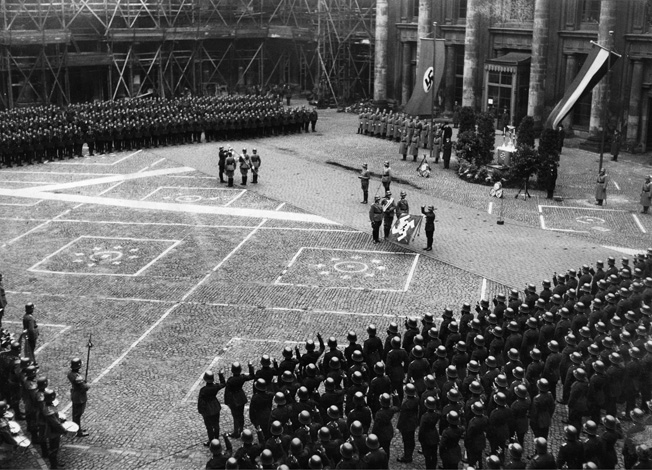
The Geheime Feldpolizeiz: The Abwehr’s Eyes and Ears
The Geheime Feldpolizei (GFP), or Secret Field Police, operated as the executive organ of the Abwehr, the German military intelligence service. It collaborated with other security forces as well as local police and intelligence services.
Established in July 1939, the GFP was the special investigations branch of the Army. Just as experienced civil policemen were drafted into the Feldgendarmerie, so the GFP was staffed by transferring experienced detectives from the Kriminalpolizei (Kripo) or criminal police. Although they were authorized to wear the uniform of an Army administration official, they generally wore civilian clothing. GFP personnel worked in close cooperation with the Sicherheitspolizei (Sipo) or security police. They undertook the investigation of espionage and treasonable activities, murder, theft, black marketeering, and other crimes within the military. In Belgium and France they were also deployed against the resistance.
Typically, the GFP were deployed in groups of up to 50 officers and men: one officer with the rank of major or higher; 32 with ranks of second lieutenant, first lieutenant, and captain; and 17 auxiliary personnel. The group could be divided so that one or two men were assigned to police a large area. In some cases, a single GFP officer could be attached to a Feldgendarmerie unit to assist in antipartisan operations.
By the second half of the war, the GFP were increasingly involved in dealing with subversion and sabotage within the Wehrmacht. After the middle of 1943, cases were identified in which German soldiers in France and Russia had deserted to the resistance or partisans. In the spring of 1944, cases of desertion started to rise rapidly. For example, in Army Group Center the GFP were on the lookout for over 3,000 deserters. At regular intervals, a gazette of wanted soldiers was published and circulated to all security and police agencies in the army group.
The Feldjägerkorps: Elite Military Police
By 1943, as Germany’s fortunes were turning and the morale of its soldiers began to wane, many able-bodied men made every effort to avoid service, especially on the Eastern Front. Strong measures were called for. In November, an entirely new force was created by the Army high command. The Feldjägerkorps was formed, answerable only to the high command; it thus had greater authority than other military police units.
The Feldjäger’s function was to preserve order and discipline, prevent panicked retreats, collect stragglers, and round up escaped prisoners of war. At the same time, the corps was tasked to hunt down deserters; arrest insubordinate soldiers, looters, and malingerers; and search rear areas for any soldiers who were capable of frontline service. They were given the power to arrest anyone who could not provide a satisfactory explanation for their absence from active duty. They had the authority to hold a drumhead court martial and carry out executions on the spot.
The Feldjägerkorps consisted of three regiments or Feldjägerkommandos. Feldjägerkommando I and II served on the Eastern Front, while Feldjägerkommando III ended the war in the West.
The commanding officer of a Feldjägerkommando had equal status to that of an Army commander with the authority to punish Wehrmacht and Waffen SS personnel alike. In case of disputes, the Feldjäger were entitled to settle arguments at gunpoint.
Members of the Feldjäger had at least three years’ of frontline combat service and had won at least the Iron Cross Second Class. Officers were also required to have considerable experience at senior command levels. These were men hardened by experience, who would tolerate no interference in their duties. Through the use of fear, backed up by the authority of the high command, it was hoped that the Feldjäger would provide the incentive for German soldiers to stand and fight to the death.
A Wide Variety of Other Organizations and Functions
Other German police and security organizations included units such as the Army Patrol Service or Heeresstreifendienst, a branch of the military police tasked with maintaining order and discipline, and occasionally taking on traffic duties, as well as checking troop identification papers with the authority to report offenders to their commanding officers for punishment.
Another was the Wehrmachtstreifendienst that consisted of two elements, the Bahnhofswache and the Zugwache. Soldiers in the Bahnofswache were responsible for patrolling large rail centers. Their duties included checking the identification and leave passes of soldiers, checking for deserters, screening civilian passengers, and helping to run the center. The Zugwache were Army troops who were used to police military trains and rail centers where large groups of troops passed through. Their duties were similar to the Bahnhofswache, but they also guarded trains passing through enemy territory and dealt with partisan acts of sabotage.
In 1936, the German civilian police were divided into the Ordnungspolizei (Orpo) or Order Police and the Sicherheitspolizei (Sipo) or Security Police. The Orpo consisted of the Schutzpolizei (municipal police), the Gendarmerie (rural police), and the Gemeindepolizei (local police). Sipo was composed of the Kriminalpolizei (Kripo) and the Gestapo.
In 1939, the Sipo were centralized in the Reichssicherheitshauptamt (RSHA) or Reich Security Main Office. The SD and the Sipo were the main sources of officers for the security forces in occupied territories. The SD-Sipo was also the primary agency, in conjunction with the Orpo, assigned to maintain order and security in the Jewish ghettos in Eastern Europe.
The Gestapo
The Gestapo, a contraction of Geheime Staatspolizei (Secret State Police), was the official secret police of Nazi Germany. It was administered by the RSHA, the head office of the Reich’s security service, and was considered a dual organization of the SD and also an office under the Sipo.
The offices of the Gestapo were, for the most part, made up of bureaucrats and clerical workers who depended on denunciations by ordinary Germans for their information. Indeed, the Gestapo was overwhelmed with denunciations and spent most of its time sorting out the credible from the less credible of these. Far from being an all-powerful agency that knew everything about what was happening in German society, the local offices were understaffed and included overworked personnel who struggled with the paper load caused by so many denunciations.
The ratio of Gestapo officers to the population of the areas they were responsible for was extremely low. For example, for Lower Franconia, with a population of about one million in the 1930s, there was only one Gestapo office with a staff of just 28, half of whom were clerical workers. In Düsseldorf, the Gestapo office, which had responsibility for the entire Lower Rhine’s four million people, had 281 personnel.
After 1939, when many Gestapo personnel were called up for military duty or moved to other security services, the overwork and understaffing at local offices greatly increased. For information about what was happening in German society, the Gestapo was for the most part dependent upon denunciations. Eighty percent of Gestapo investigations were in response to information provided by ordinary Germans about their neighbors, while 10 percent were based on information provided by other branches of the German government and another 10 percent in response to information that the Gestapo itself unearthed.
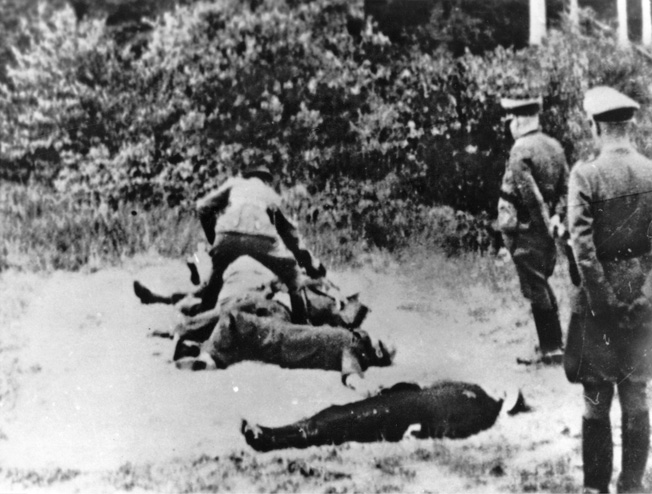
Execution of hostages by members of the German secret police at Luby, in the German protectorate of Bohemia and Moravia, 27 May 1942, perhaps as punishment for their suspected involvement in the assassination of Reinhard Heydrich.
The Schutzstaffel: Hitler’s ‘Praetorian Guard’
The Schutzstaffel or Protective Squadron, the infamous SS, was an organ of the Nazi Party. The SS grew from a small paramilitary unit to an elite force that served as the Führer’s “Praetorian guard.” It was built upon the extreme Nazi ideology and operated under Reichsführer Heinrich Himmler.
SS Einstazgruppen or operational task groups were involved in the suppression of partisan or guerrilla activity as well as the rounding up of Jews and undesirables in Russia and Eastern Europe.
The SS was responsible for the vast majority of war crimes perpetrated under the Nazi regime. As part of its race-centric functions, the SS oversaw the isolation and displacement of Jews from the German population and in the conquered territories, seizing their assets and imprisoning them in concentration camps and ghettos where they would be used as slave labor pending extermination.
The Sicherheitsdienst: SS Intelligence Service
The Sicherheitsdienst, abbreviated SD, or Security Service, acted as the intelligence service of the SS and the Nazi Party and was considered a sister organization to the Gestapo. The SD became more powerful after the Nazis came to power, and the SS began to infiltrate leading positions in the security apparatus of the government. In 1938 the SD was made the official intelligence organization for the state as well as for the party.
The SD was tasked with the detection and neutralization of enemies of the Nazi leadership. To fulfill this task it created a system of agents and informants throughout the Reich and later in the occupied territories. The organization consisted of a few hundred full-time agents and several thousand informants. The SD was mainly an information-gathering agency, while the Gestapo and to a degree the Kripo made up the executive department of the political police system. Both the SD and the Gestapo were effectively under the control of Heinrich Himmler as chief of the German police, while the Kripo kept a level of independence as it had been long established.
The Sicherungs-Divisionen
In addition to those troops who were dedicated to security and policing matters such as the Feldgendarmerie and the Feldjäger, the German Army fielded 15 security divisions (Sicherungs-Divisionen) during the war. These were usually formed of men who were in lower fitness categories, often older men with minor medical ailments that prevented them serving in frontline combat units. Some of these units began life as regular infantry divisions and were subsequently downgraded, having all their heavy weapons withdrawn. They were often called into action against partisan forces in Eastern Europe and Russia, but in the main they were inadequate to the tasks allotted them. This was especially true as the war dragged on and the few fit and able men serving in such units were drawn off to combat formations.
Dissolution and Reorganization After the War
After Germany’s surrender, while many of the German government organs were quickly dismantled, many Feldgendarmerie found themselves assigned to police roles by the Western Allies. British forces in Schleswig-Holstein formed a regiment of Feldgendarmerie to maintain discipline and order at the Meldorf Demobilization Center. All were armed and paid with rations.
German military police and security forces were the “chain dogs,” the hero snatchers, given a mandate to enforce the law and uphold a code of honor under a tyrannical regime. Some were lawless, unholy organizations wielding absolute power of life and death, while others tried to provide order in chaos.
Originally Published September 2010
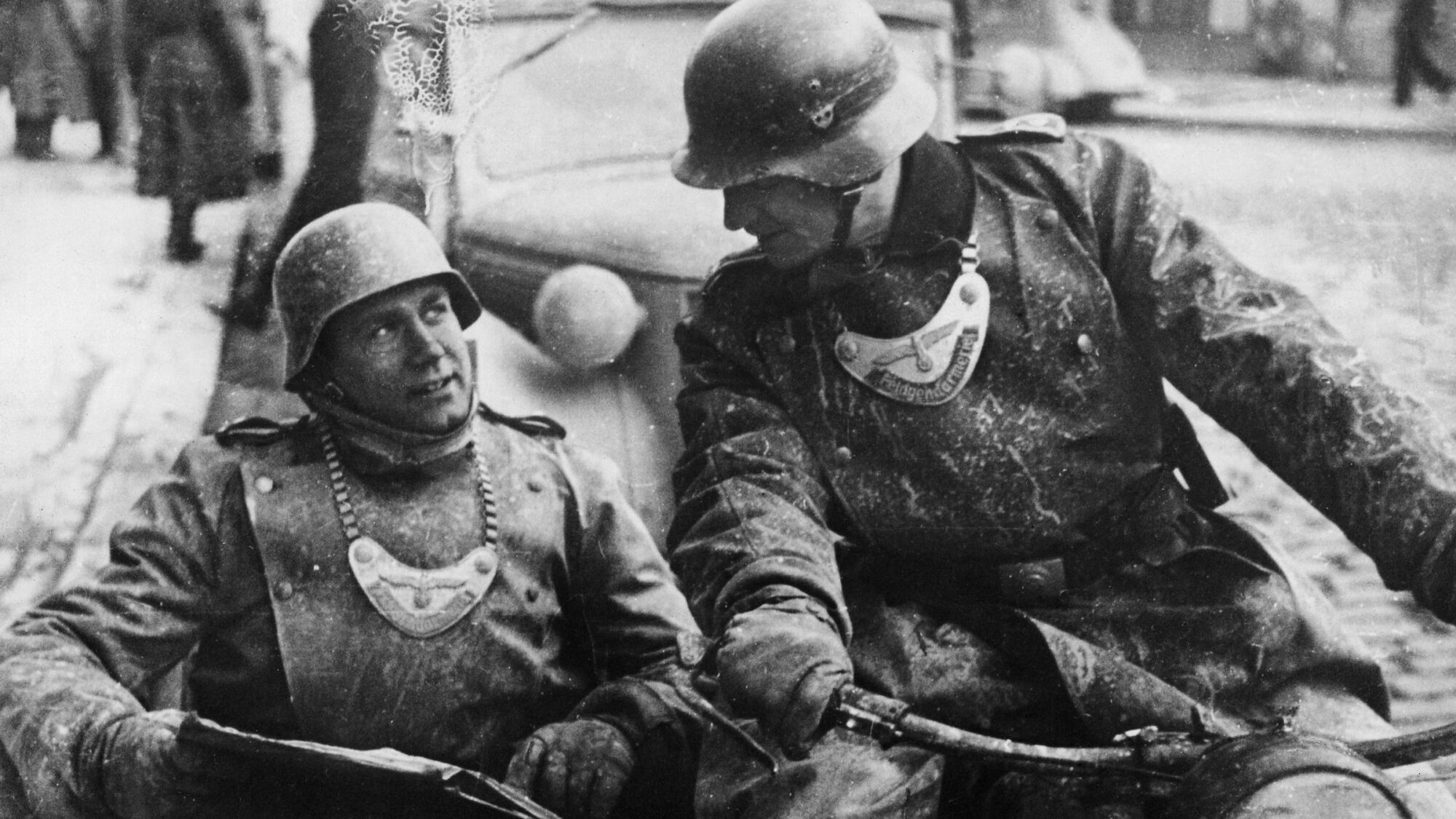
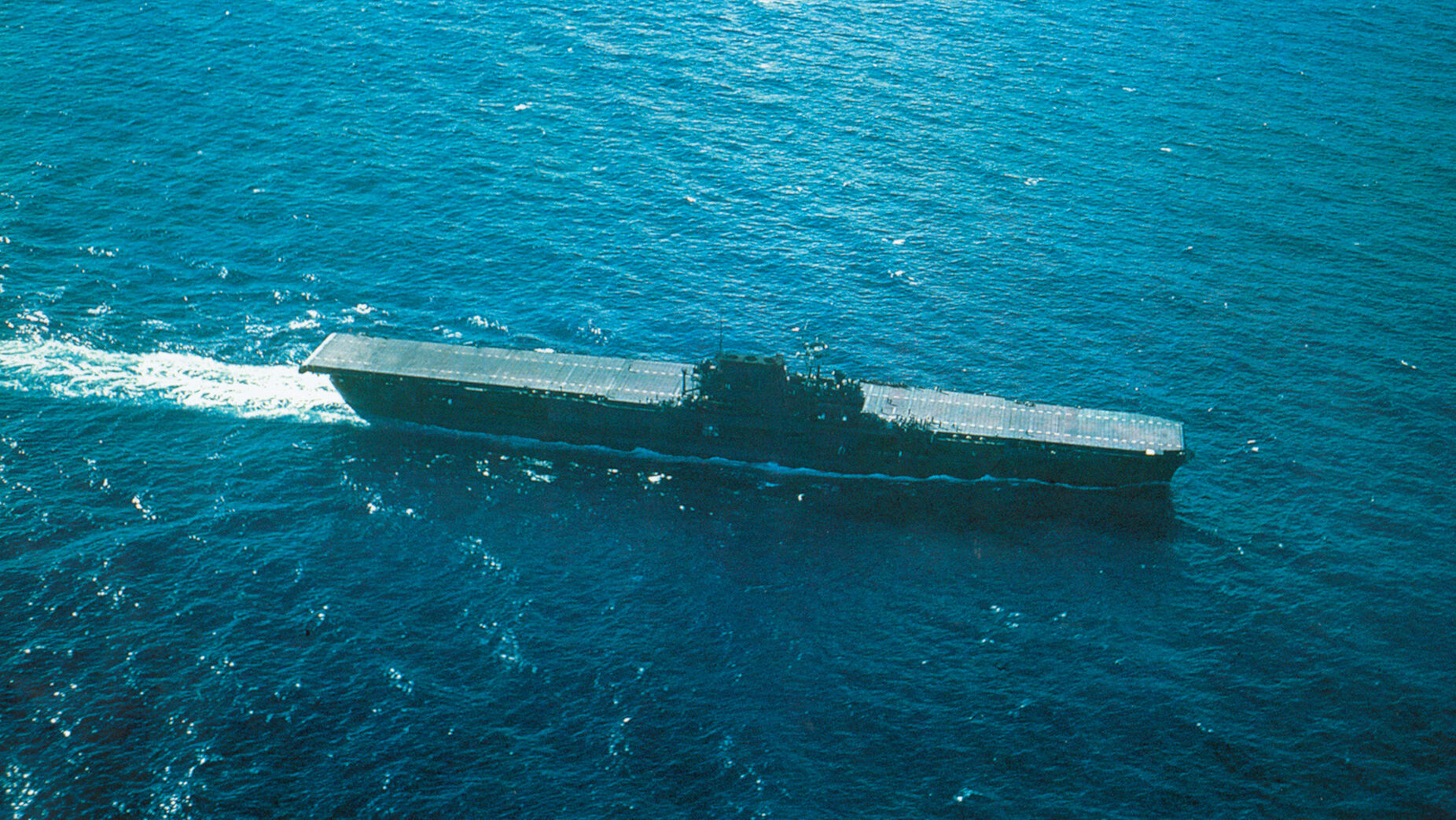
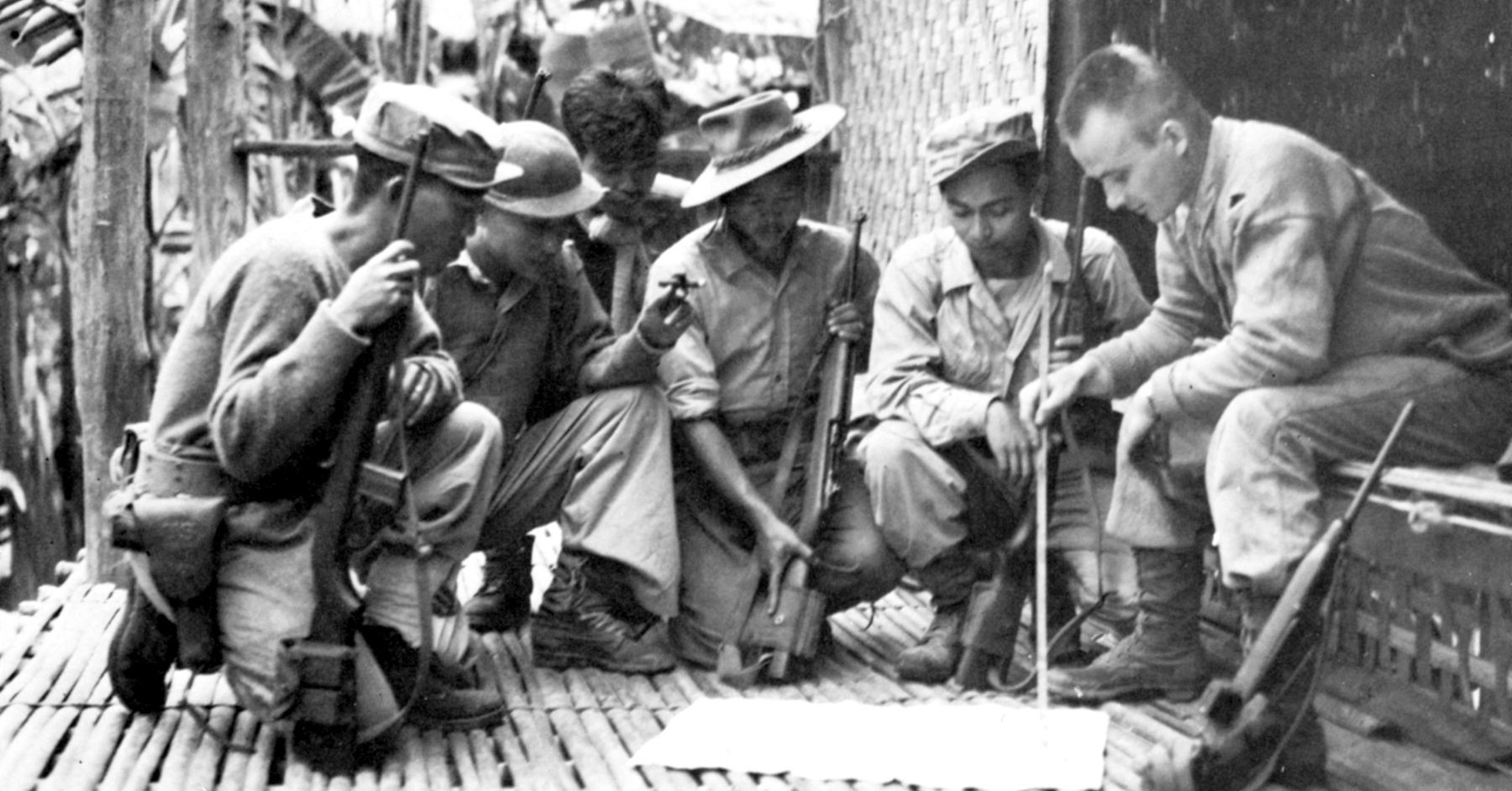
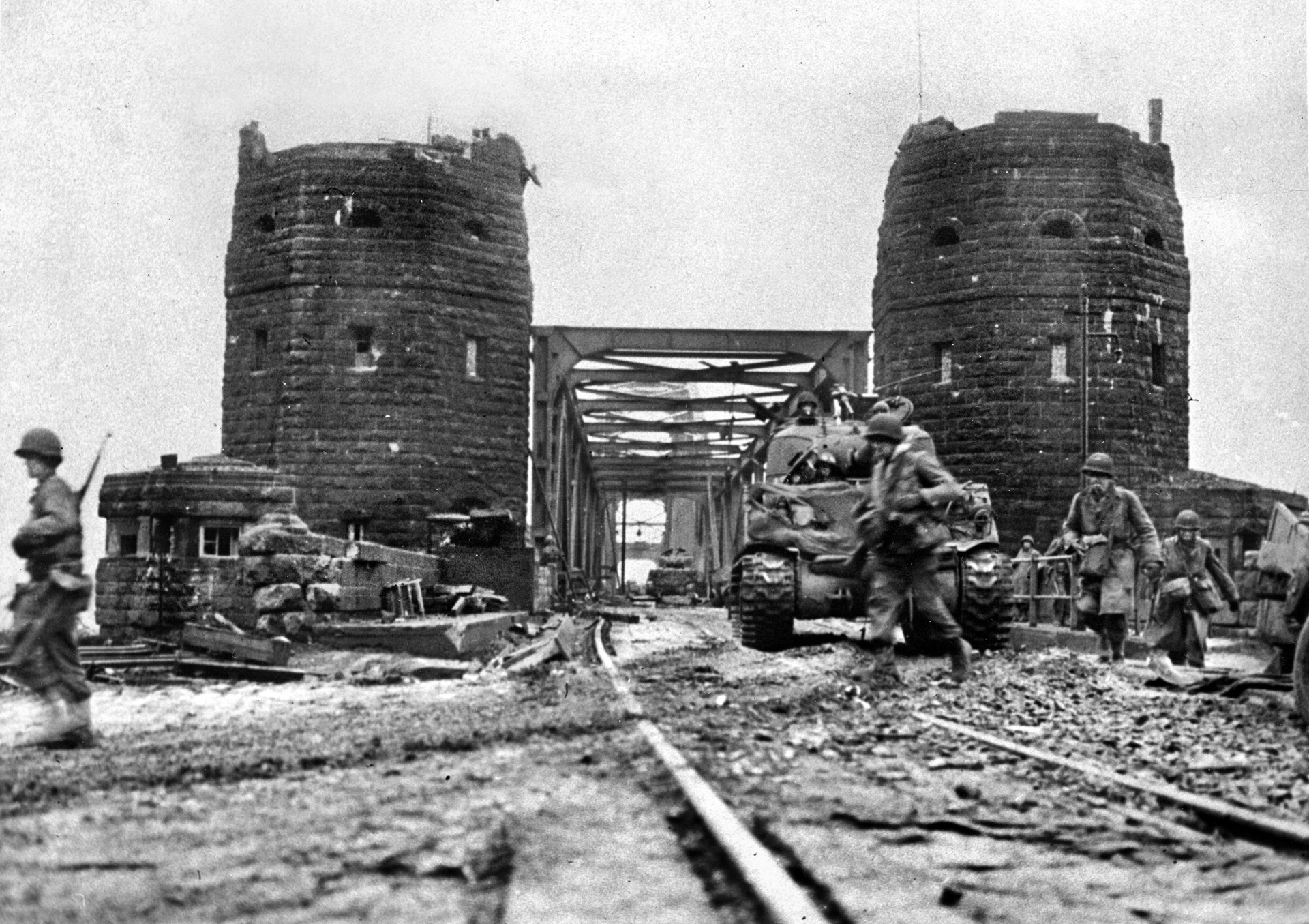
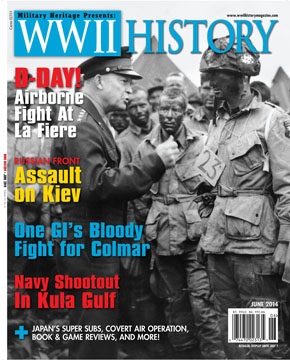
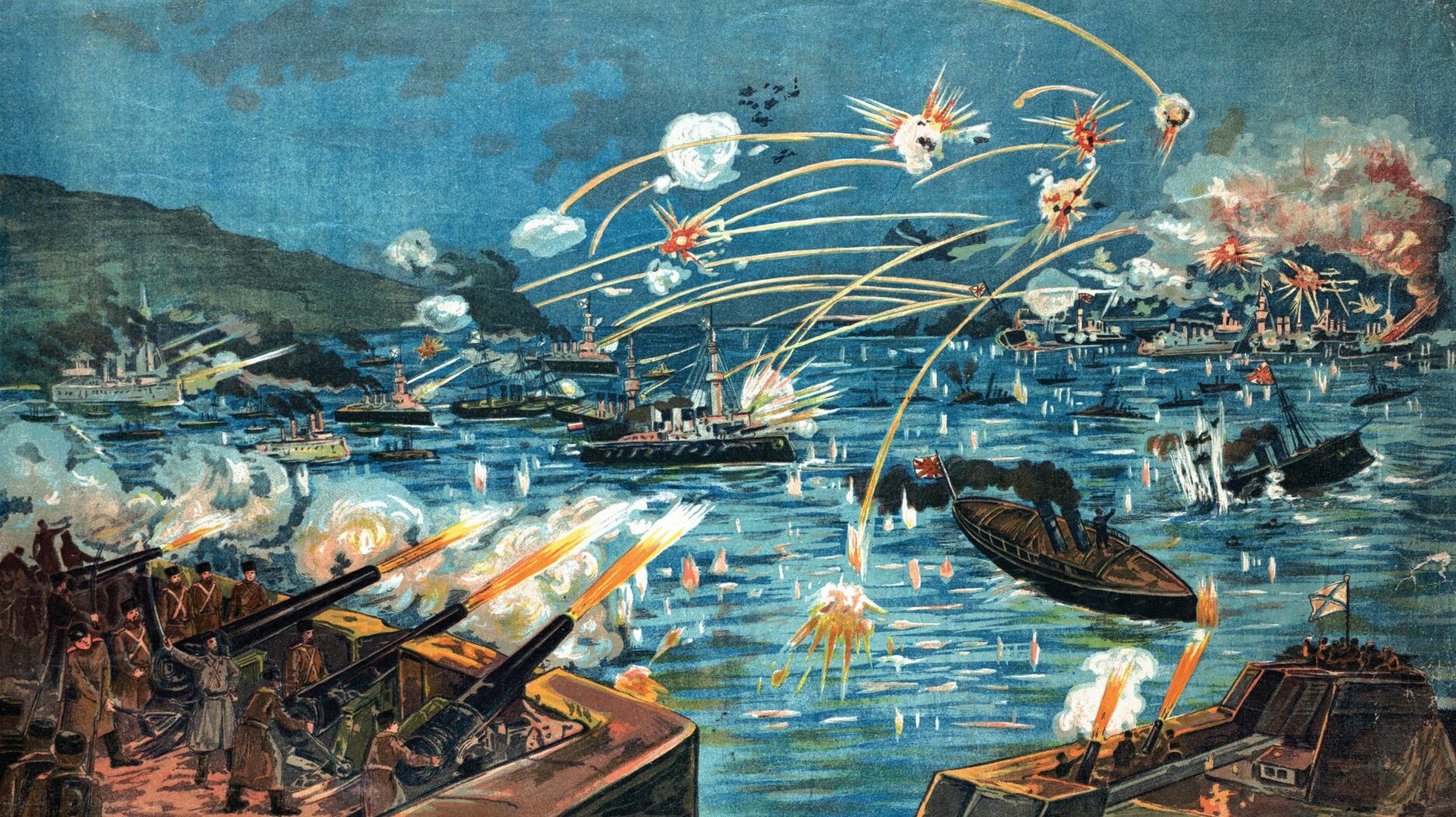
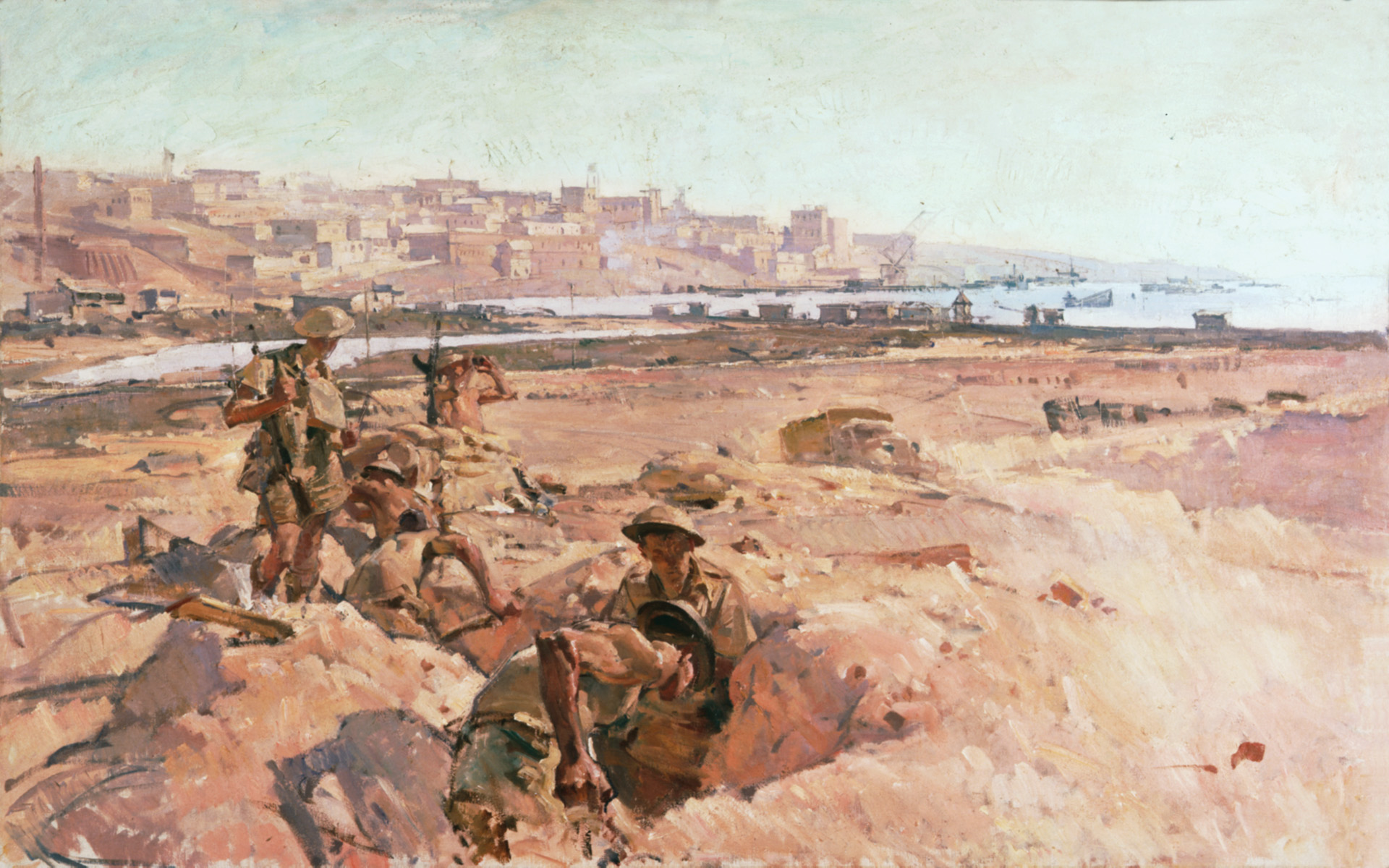
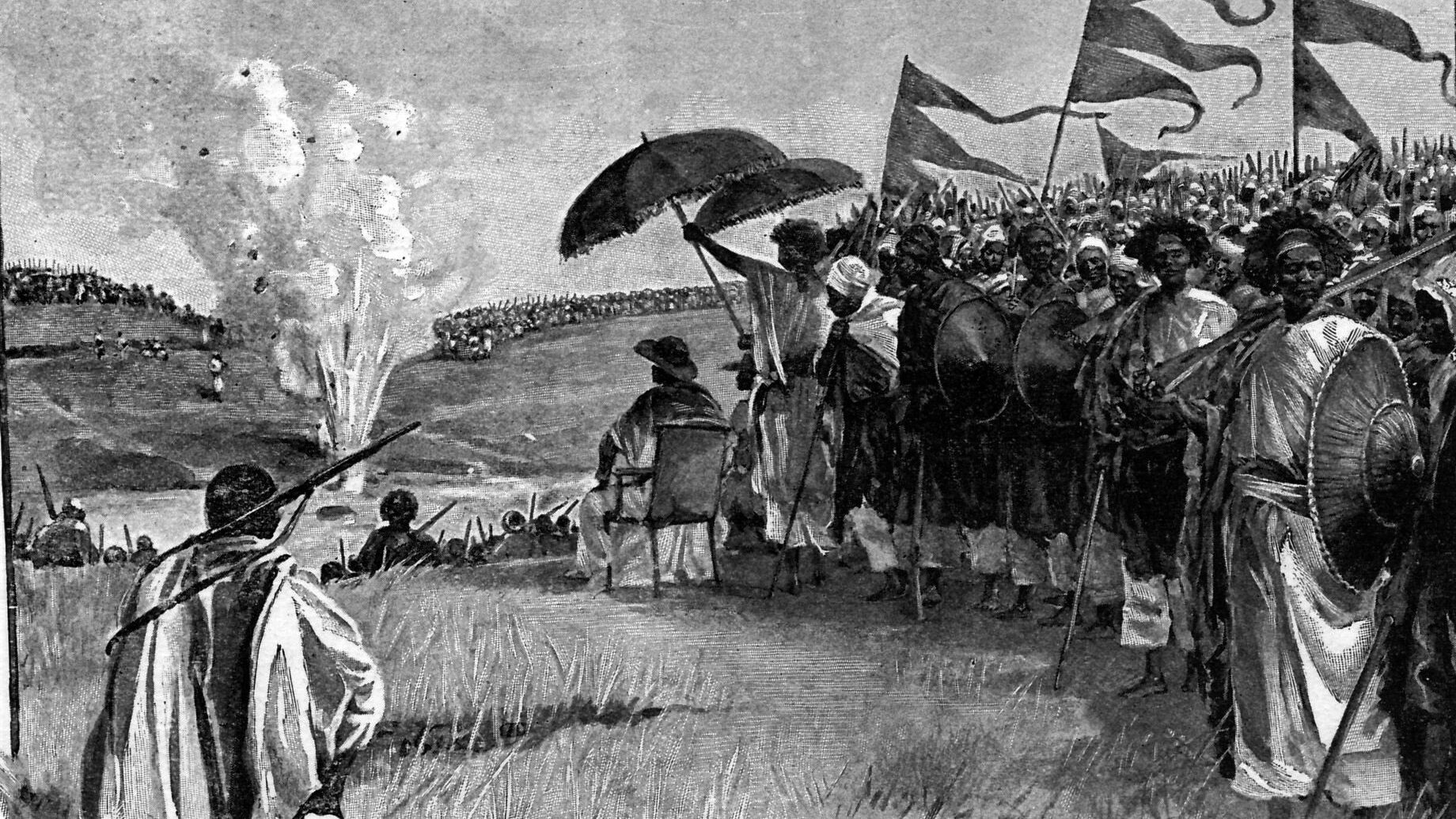
It boggles my mind that Nazi Germany could be so barbaric and so bureaucratic at the same time.
Quite right. Also many of the factions were at odds with other parts of the bureaucracy which created some strong rivalries that ended up benefiting the Allies.